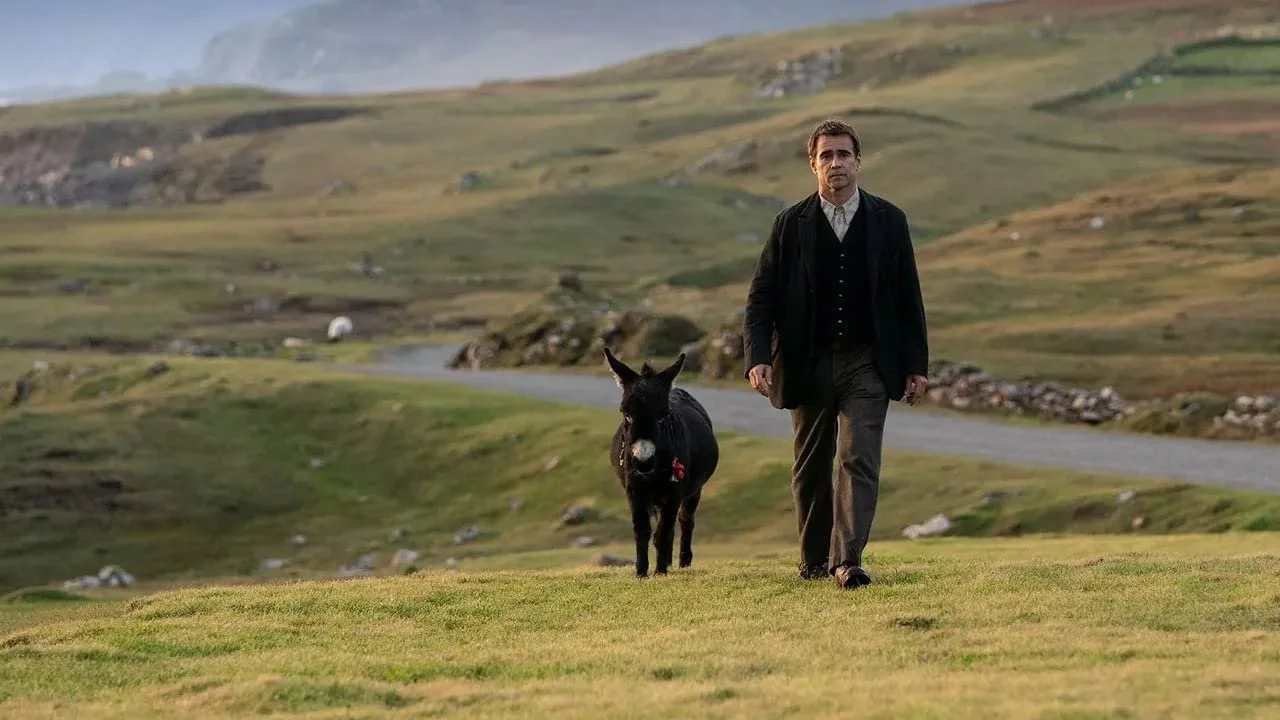The Banshees of Inisherin
Directed by Martin McDonagh
Running time: 1hr49 | REVIEWED BY CATHERINE BRAY
Colin Farrell stars in The Banshees of Inisherin
When Pádraic (Colin Farrell) calls for his friend Colm (Brendan Gleeson) on his daily trip to the tiny local pub on the (fictional) island of Inisherin off the West Coast of Ireland, it’s clear we’re witnessing part of a routine as regular and inevitable as sunset. This is what he does. This is what he has done, thousands of times before, and normally with the result that the two men go to the pub together. But today, April 1st, 1923, is different. Colm ignores Pádraic. The stage is set for what turns out to be a magnificent film — by turns hilarious, touching, bleak and wise.
This is the finest work of writer-director Martin McDonagh’s career. He’s a filmmaker who has never shied away from using shock as a dramatic tactic, and there are shocking moments in this film too, which I won’t spoil here, except to say that they are earned, lived-in and motivated by character.
Character is crucial to this film. I’m not sure I’ve ever enjoyed Colin Farrell more, and I say that as someone who very much enjoys Colin Farrell. It’s a very skilled performance which never looks too much like performing, but he fully commits. As the mostly rather sweet, simple Pádraic, even his resting face screams dim bulb; he barely needs the (often laugh-out-loud) dialogue. Gleeson has marginally less screen time but makes just as much of it, and has to sell some behavior that on the face of it might seem odd, but that I fully bought, hook, line and sinker.
If we didn’t believe in Pádraic and Colm, I’m not sure any of the rest of it would work, but they feel like instantly classic characters. The get into some fine old fights, with Pádraic batting for niceness as the overridingly important factor in human relationships, and Colm turning his back on niceness – or as he sees it, dullness – in favour of creativity, talent and legacy. It’s easy to see plenty of contemporary cultural concerns threaded through this dialectic, but never at the expense of believing that these two guys are really having the conversation that they are having, which is deeply satisfying in a world overrun with two-dimensional characters designed to argue a point.
One of the film’s greatest triumphs is its sense of place. As a stylised portrait of a small community in the West of Ireland a century ago, it would have been easy to present us with a rogue’s gallery of comic types, but while it’s certainly very funny, we’re not in ‘Father Ted’ country here. Nor is this a vision of a sentimentalised Emerald Isle, the one that looks like an advert for Kerrygold butter, full of simple homespun rural truths. There is something slightly unreal about Inisherin, but it’s more Beckett than Blarney.
Throughout, I was haunted by a lurking feeling that all of these characters might in fact be living in some sort of underworld or purgatory, waiting to cross over. Part of this feeling is in the writing, which makes several references to the mainland as if it exists on another plane of reality. But it’s the beautiful and eerie cinematography from Ben Davis (together with Carter Burwell’s gorgeous, keening score), that really takes us there, capturing the banks of low-lying cloud shading into impenetrable earth-bound mists, the brutally abrupt clifftops that feel like anyone on top of them is about to fall off the edge of the map. I cannot wait to watch it again.
THE BANSHEES OF INISHERIN (2022) Written by Martin McDonagh | Shot by Ben Davis | Edited by Mikkel E.G. Nielsen
Screened in Competition at the 79th Venice Film Festival
